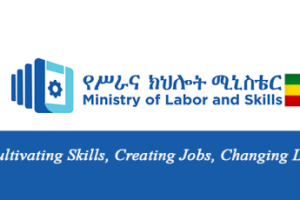
Salt, a natural resource, has been used by humans for centuries. It is still used as a seasoning, animal fattening, and even as a skin softener. In addition to being used as a seasoning, people have got various results via experimented with it. Examples include light-colored clothing to prevent discoloration by salting, relieving pain by applying beeswax on the body of a bee, extinguishing oil spills, dipping some salt in water to identify spoiled eggs, and preserving dry foods such as shrimp, pepper, and other foods for a long time.
Such discoveries are supported by both culture and science. There is also debate about the dangers of salt in terms of human health. Therefore, even though carful use of salt is imperative, avoiding salt from food is not advisable. Not to be overlooked is the fact that such a multi-faceted, or sodium chloride, salt-rich commodity was a valuable commodity in ancient times.
According to historical sources, it was used as a valuable spice in China, Greece, the Middle East, and even Africa. In the Mediterranean, as well as in the Roman Empire, salt served as a bar. Sources indicate that it is also used as a currency in Ethiopia. Bar salt is said to have been favored by a number of reasons for easing travel problems, heavy taxes, and far from its sources and others.
According to sources, the bar, which was to be excavated free from Afar, would be expensive and rare when it reached the city and palace. Evidence suggests that when the gold coin was purchased at a bar production center of 120 to 130 bar, Showa province could not afford to buy more than five ounces.
During winter, it is more popular because of the inconvenience of transportation. History has it that the fluctuating, melting and disintegrating nature of the bar made it difficult to use it as a bargaining chip, and that side-by-side businesses were also influenced by it.
According to the sources, the money was used throughout Ethiopia. Salt is also said to have been used as a weapon of war during wartime. It is worth noting that the benefits of salt resources are multifaceted, sometimes leading to conflict of interest and the issue being politically motivated. We would like to remind you of the historical background of the use of salt.
Jamal Ahmed, a professor of Geology at Semera University, says “Salt is classified as fuel, geothermal energy, and other geological resources” Bar and the lake are a resources of salt resources. The resources are divided into upper and lower. The resource of salt and the service it provides are vary.
Salts, such as, Potash are used for a variety of industrial inputs. This rock is called rock salt and is found in Dalol. In ancient times, it was called a bar. Bar salt is dry. It is shaped like a square by traditional salt producers. Only the upper part of the apex is estimated to have a depth of 180 m.
Another type of salt is found in lakes. It is produced by evaporation. The water is left over and the salt is used. The salt left over from the well is used for man-made drilling and extraction with traditional labor. About 95% of the country’s salt is sourced from Afdera in the Afar region.
Regarding the natural content of lake water that makes it salty, Jamal explained: The source of the Afdera salt has different characteristics. The soil around it is salty in itself. The surrounding tributaries wash away the area into the main lake and contribute to the salt reserves when it rains. All of these factors make the area salty.
In the current situation, it is unlikely that wealth will spread. The presence of feeder rivers reduces the risk. There are about 750 small and large scale producers in Afdera. These generators use a generator to draw water from the lake; they draw a lot of water out of the lake.
The lake is more likely to have salt water. It is also found underground. As long as there is a lake feeder river, the source of wealth will continue. According to Professor Jamal, this geological salt contains industrial resources, such as potash, salt, and gypsum. Although he is not sure about the wealth in parts of Ethiopia outside of the Afar region, he said the presence of salt is not the only requirement.
But the product is up to date. According to sources, the production will take place in the Somali region outside the Afar region. Jamal does not believe that this salt wealth, which is historically important and important, has been given as a national priority. In this age of technological innovation, salt is traditionally produced in Ethiopia. The trade is also traditional. According to him, Semera University has conducted a survey of salt resources at three major locations in the region, including Afdera.
He does not think that salt has any economic value. According to him, salt has never been used as a seasoning. Salt is one of the most widely used chemicals in the world. Soda-ash is a product of salt inputs used by factories, such as soap. Leather factories are also in dire need of salt. Other parts of the world that is prone to frostbite also use salt as a means of dissolving asphalt.
In addition to using this salt resource domestically, it is possible to grow the country’s economy by earning foreign exchange as one of the inputs in foreign trade. The Middle East, in particular, is in dire need of resources. It is possible to benefit from the inputs from the production to the marketing.
Semera University has taken this into consideration and is accessible to both the producer and the community in the sector. It is in the process of designing a demonstration project that will be accessible to the community. The university will implement the project with the relevant executive institutions of the region.
According to the instructor, salt is important in many areas, but it is almost neglected. It is safe to say that the country as a whole has benefited from the fact that the manufacturing process has not been updated and its benefits have not been properly utilized.
Evidence suggests that salt products for industrial use are purchased in foreign currency and used locally. It is the research and development of higher education institutions and the dissemination of research findings to policy makers. The transfer is expected from the executive branch in the sector.
If the researcher can be turned into a benefactor by reading and practicing, there is a chance that it will be able to contribute to the weakening of the economy during the war and for various reasons. Evidence from various sources indicates that the salt produced in the Afar region faces various challenges.
It is also known that there were complaints about the salt used in the leather industry. There were also gaps in the production of salt that was good for human health. It will be recalled that the government has made various efforts to resolve the issue.
BY GIRMACHEW GASHAW
THE ETHIOPIAN HERALD WEDNESDAY 3 JANUARY 2023





